Are you developing smart, connected devices and want to ensure they meet global cybersecurity standards? Concerned about the rising expectations for digital security across international markets? Navigating the world of cybersecurity testing can feel overwhelming, especially with evolving regulations. At 360Compliance, we simplify the process, ensuring your products align with essential cybersecurity requirements for seamless global market access.
What Is Cybersecurity Testing?
Cybersecurity testing ensures that products with digital components, such as IoT devices, software applications, and connected solutions, comply with cybersecurity regulations and best practices. The testing evaluates your product’s security features to identify and address potential vulnerabilities, ensuring that your device or software is protected against unauthorized access, data breaches, and cyberattacks.
Cybersecurity testing not only ensures regulatory compliance but also strengthens consumer trust and protects your brand’s reputation in today’s highly interconnected world.
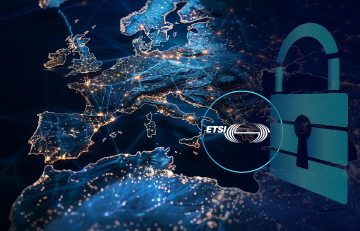
EN 303 645 Compliance & IoT Cybersecurity Testing
Achieve EN 303 645 compliance and ensure your IoT devices meet the highest cybersecurity standards.At 360Compliance, we provide expert testing and certification services aligned with the RED Delegated Act, EN 18031, and CE / UKCA requirements—helping manufacturers build safer, compliant, and trusted connected products. What Is EN 303 645 and Why It Matters EN 303 645 is the leading European cybersecurity standard for consumer IoT devices, developed by ETSI to define baseline security requirements.It addresses major vulnerabilities such as weak passwords, insecure updates, and poor data protection.Complying with EN 303 645 demonstrates your product follows recognized cybersecurity best practices—protecting users, supporting CE / UKCA marking, and boosting customer trust. 📄 For the official specification, see the ETSI EN 303 645 Standard (PDF). How EN 303 645 Supports CE and RED Cybersecurity Requirements The RED Delegated Act introduces mandatory cybersecurity controls for wireless and connected devices.Testing to EN 303 645 and EN 18031 provides a recognized framework to prove compliance with these RED requirements. At 360Compliance, our experts perform full IoT cybersecurity testing, helping you: Align your devices with the Radio Equipment Directive (RED) Prepare documentation for CE marking Address future Cyber Resilience Act (CRA) obligations ➡️ Learn more about our CE & RED Certification Services and IoT Cybersecurity Testing Solutions. Key Cybersecurity Areas Covered by EN 303 645 Removing universal default passwords Providing secure software / firmware updates Protecting personal and sensitive data Enforcing strong authentication and access control Establishing clear vulnerability disclosure policies By addressing these areas, manufacturers minimize risk exposure and enhance product resilience. Steps to Achieve EN 303 645 and EN 18031 Compliance Assessment of IoT Device Security Identify vulnerabilities through detailed cybersecurity evaluation. Implementation of Security Measures Apply all 13 baseline EN 303 645 provisions to strengthen protection. Security Testing Conduct penetration, update, and data handling tests to verify resistance to attacks. Documentation & Reporting Prepare a complete compliance file, including a vulnerability disclosure policy. Certification Obtain final approval confirming your IoT devices meet EN 303 645 and EN 18031 requirements. Which IoT Products Need to Comply This framework applies broadly across connected products, such as: Smart home devices (thermostats, locks, cameras) Wearables (fitness trackers, smart watches) Connected appliances (refrigerators, washing machines) Home entertainment systems (smart TVs, speakers) IoT gateways and hubs Ensuring compliance protects consumers from cyber threats and opens access to global markets. Benefits of EN 303 645 Compliance for Manufacturers Builds customer trust and product credibility Ensures regulatory readiness under CE / RED / CRA Reduces risk of security incidents or recalls Streamlines global market entry through recognized certification Consequences of Non-Compliance Failing to comply can lead to: Product vulnerabilities → data breaches, device hijacking Market restrictions → delayed CE approval or EU market bans Reputation damage → loss of consumer trust and brand value Frequently Asked Questions Is EN 303 645 mandatory in the EU?Not legally yet, but it’s the industry benchmark for IoT cybersecurity and a key part of RED and CRA compliance. Which companies must comply?Any manufacturer, importer, or distributor of consumer IoT devices targeting the EU market. Does EN 303 645 apply to business IoT devices?Primarily consumer-focused, but enterprise IoT manufacturers also benefit from adopting its security controls. Why Choose 360Compliance for IoT Cybersecurity Testing Navigating IoT cybersecurity can be complex — we simplify it. At 360Compliance, we offer: End-to-End Project Management – From initial gap analysis to final certification Expert Security Testing – EN 303 645 and EN 18031 testing aligned with RED requirements Global Market Access – Comply once, sell worldwide Transparent Pricing – No hidden fees ➡️ Start your compliance journey today — Contact 360Compliance for professional EN 303 645 and IoT cybersecurity testing services. EN 303 645 Compliance and IoT Cybersecurity Testing are now essential parts of regulatory approval in Europe and beyond.With 360Compliance, you gain a partner that understands both the technical and regulatory aspects of IoT security — ensuring your devices are safe, compliant, and market-ready.
Learn more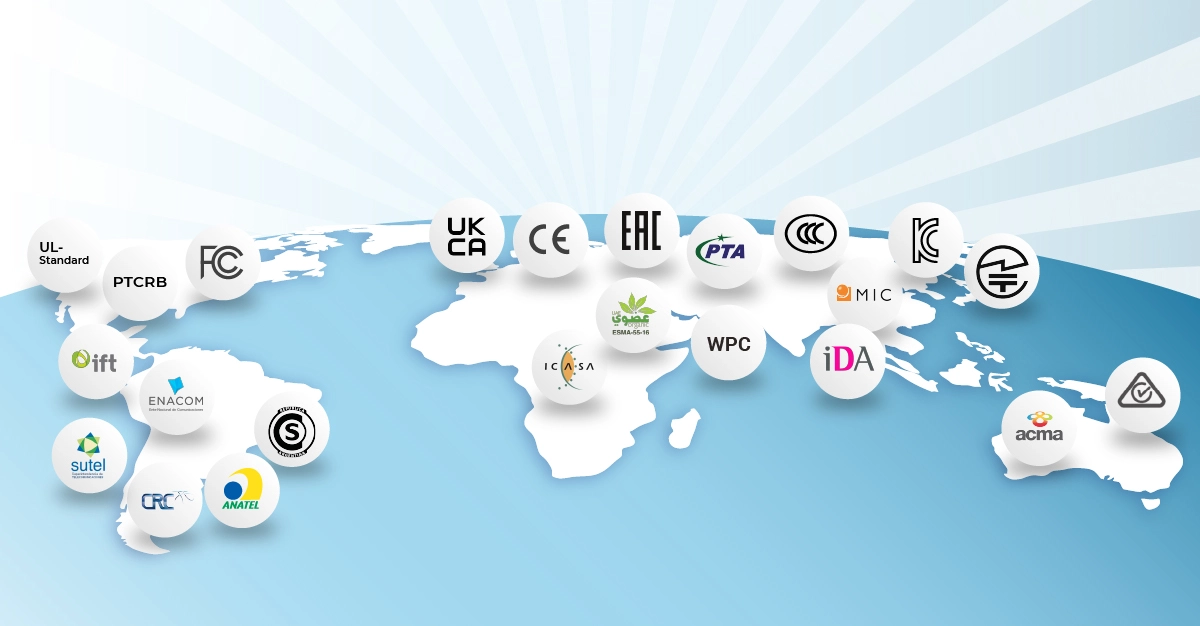
Cyber Resilience Act
The EU Cyber Resilience Act (CRA) (Regulation 2024/2847) is a landmark EU cybersecurity regulation setting mandatory cybersecurity and CE compliance requirements for all products with digital elements — including connected IoT devices, embedded hardware, and software platforms. This regulation enforces security by design, vulnerability management, and CE cybersecurity readiness throughout the entire product lifecycle, safeguarding consumers and businesses from growing cyber threats. 💡 Need help with CRA compliance? Contact 360Compliance for expert EU cybersecurity testing, IoT security evaluation, and CE certification. At 360Compliance, we help manufacturers and developers achieve full Cyber Resilience Act (CRA) compliance through: EN 303 645 IoT security testing EN 18031 cybersecurity evaluation CE RED Delegated Act (EU) 2022/30 conformity assessments Our team ensures your products are secure, compliant, and ready for seamless EU market access — fully aligned with EU cybersecurity regulations and Cyber Resilience Act (CRA) requirements. What Is the Cyber Resilience Act (CRA)? The Cyber Resilience Act (CRA) strengthens the cybersecurity of digital products, covering both hardware and software.It introduces unified requirements that manufacturers, importers, and distributors must follow to guarantee protection across the product lifecycle — from design to end-of-life. The EU Cyber Resilience Act (CRA) is a cybersecurity regulation requiring manufacturers to ensure digital products — including IoT devices and software — meet strict security-by-design standards. It creates a single EU framework for cybersecurity and CE compliance. Core Principles of the CRA Security by Design (EN 18031): Integrate cybersecurity at every development stage. Continuous Updates & Vulnerability Management (EN 303 645): Maintain regular patching, threat monitoring, and incident response across IoT and software systems. Transparency & Accountability: Disclose vulnerabilities, document risks, and provide clear security guidance. The CRA complements the Radio Equipment Directive (RED) and its Delegated Act (EU) 2022/30, along with EN 303 645 IoT cybersecurity standards, creating a harmonized cybersecurity framework for digital products across Europe. 👉 View the full regulation on EUR-Lex Why Cyber Resilience Act Compliance MattersEnsuring your digital products meet EU cybersecurity and CE marking standards. Compliance with the EU Cyber Resilience Act is essential to: Protect users and businesses from cybersecurity risks Ensure CE marking eligibility for EU market access Avoid regulatory fines and reputational damage Demonstrate adherence to EU cybersecurity law CRA compliance reduces exposure to cyberattacks, data breaches, and enforcement penalties — while proving your company’s commitment to secure-by-design development. Key Supporting Standards EN 303 645: IoT security baseline for connected devices EN 18031: ICT security evaluation and testing framework RED Delegated Act (EU) 2022/30: Mandatory cybersecurity requirements for wireless equipment Partnering with 360Compliance gives you end-to-end expertise in CRA, CE, EN 303 645, and EN 18031 testing — ensuring full readiness for EU Cyber Resilience Act enforcement. Which Products Are Affected by the Cyber Resilience Act? The Cyber Resilience Act (CRA) applies to nearly all products with digital elements.If your product connects to a network or processes data, it must comply with CRA requirements. Examples Include Connected devices: IoT, smart home appliances, wearables, consumer electronics Software applications: Operating systems, mobile apps, SaaS, enterprise platforms Hardware with digital components: Routers, smart meters, industrial controllers Cloud-connected services: Embedded software, gateways, digital interfaces At 360Compliance, we offer IoT cybersecurity and CE testing services aligned with EN 303 645, EN 18031, and the RED Delegated Act (EU) 2022/30 — ensuring your digital products meet all EU cybersecurity requirements. How to Achieve CRA Compliance: Testing & Conformity Assessment Compliance with the Cyber Resilience Act and related EN standards requires a structured approach covering design, testing, and documentation. 360Compliance guides you through every phase — from initial risk assessment to final certification — ensuring EU market readiness. Steps to CRA Compliance Cybersecurity Risk Assessment – Identify vulnerabilities and mitigation strategies with 360Compliance experts. Security by Design (EN 18031) – Implement secure architecture, encryption, and lifecycle protection. Testing & Evaluation (EN 303 645) – Validate IoT and software security using European standards. Continuous Monitoring & Updates – Establish post-market vulnerability management. Documentation & Technical Files – Prepare detailed CE documentation and risk reports. Certification & Market Access – Obtain CRA conformity and CE marking for EU sales. Consequences of Non-Compliance Failing to comply with the EU Cyber Resilience Act can lead to: Market Access Restrictions: Products blocked or withdrawn from EU markets Fines & Penalties: Severe financial sanctions under EU cybersecurity law Reputational Damage: Loss of customer trust and market credibility Non-compliance may also violate the RED Delegated Act (EU) 2022/30, which enforces cybersecurity standards for connected devices. To avoid these risks, 360Compliance offers comprehensive Cyber Resilience Act testing and certification services — helping you achieve CE compliance and maintain a competitive edge. 👉 Visit the European Commission’s Cyber Resilience Act Overview for official guidance. Why Cybersecurity Matters Now More Than Ever As cyber threats grow, the Cyber Resilience Act ensures digital products are secure by design and protected throughout their lifecycle.This regulation strengthens Europe’s digital economy and safeguards users, data, and industries. By aligning with EN 303 645, EN 18031, and the Cyber Resilience Act, manufacturers demonstrate leadership in cybersecurity and compliance. Secure design. Continuous protection. Market confidence.That’s the foundation of the Cyber Resilience Act. Get started today with 360Compliance’s Cyber Resilience Act testing services and ensure CE, EN 303 645, and EN 18031 compliance. Why Choose 360Compliance for EU Cyber Resilience Act Certification Navigating the Cyber Resilience Act, EN standards, and CE marking can be complex — but 360Compliance makes it seamless. We deliver end-to-end CRA compliance solutions, from testing to documentation and certification. Our Expertise Includes Comprehensive CRA Testing & Certification – Under EN 303 645, EN 18031, and RED (EU) 2022/30. Security by Design Implementation – Embedding cybersecurity in product development. Technical Documentation & CE Preparation – Creating reports and Declarations of Conformity. Global Market Access – CRA compliance enhances international trust and acceptance. 👉 Contact 360Compliance today to begin your EU Cyber Resilience Act (CRA) testing and certification — ensuring compliance with EN 303 645, EN 18031, and CE marking requirements for your connected products.
Learn more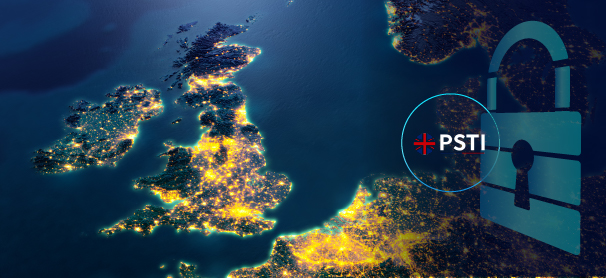
UK PSTI Act
The UK Product Security and Telecommunications Infrastructure (PSTI) Act introduces mandatory cybersecurity requirements for connected devices sold in the UK. From smart appliances to wearables, the law ensures products are secure by design, protecting consumers and raising the bar for IoT security. At 360Compliance, we help manufacturers achieve UK PSTI Act compliance through cybersecurity testing, conformity assessments, and documentation support — making sure your products are secure, trusted, and ready for the UK market. What Is the UK PSTI Act? The UK PSTI Act is a UK law that establishes baseline cybersecurity rules for IoT and connected devices. Key requirements include: Ban on default passwords – each device must have unique credentials. Vulnerability disclosure policy – manufacturers must provide a contact point for reporting issues. Transparency of updates – consumers must know how long security updates will be provided. 👉 See official guidance from the UK Government on PSTI. Why Compliance Matters Compliance is not optional — it is mandatory for all IoT devices sold in the UK. Benefits include: Market access – non-compliant products cannot be placed on the UK market. Cybersecurity resilience – reduces risks of cyberattacks and data breaches. Consumer trust – buyers choose devices that meet recognized security standards. Competitive advantage – compliance shows commitment to product security. It also complements EU Cyber Resilience Act requirements and aligns with ETSI EN 303 645 IoT cybersecurity standard. Key benefits of compliance include: Enhanced security for connected devices Improved consumer trust and brand reputation Access to the UK market with fully compliant products As the use of connected devices continues to grow, maintaining high cybersecurity standards is crucial for the safety of consumers and the success of your business. Thus, staying compliant will secure your business operations in the long term. Which Products Are Covered by the UK PSTI Act? The PSTI Act applies to a wide range of connected products, including: Smartphones and tablets Smart home devices (cameras, thermostats, lighting) Wearables (smartwatches, fitness trackers) Connected appliances (fridges, washing machines) Routers and gateways Consumer IoT and entertainment systems 👉 For end-to-end evaluations, explore our IoT testing services. Steps to Achieve Compliance Eliminate default passwords – ensure unique, secure device credentials. Establish a vulnerability disclosure policy – provide a contact point for reporting issues. Maintain security update transparency – define and communicate update timelines. Conduct cybersecurity testing – verify devices against real-world attack scenarios. Prepare documentation & certification – demonstrate compliance for market access. 👉 Work with 360Compliance experts to streamline every step. Consequences of Non-Compliance Failure to comply with the UK PSTI Act may lead to: Financial penalties Market restrictions (products blocked from UK sale) Reputational damage if insecure devices lead to breaches FAQs – UK PSTI Act Is the UK PSTI Act mandatory for IoT devices?Yes — the PSTI Act applies to all connected devices sold in the UK. What are the penalties for non-compliance?Fines, enforcement action, and restrictions on selling products in the UK. What is the compliance deadline?The PSTI Act is already in force. Products must comply before being sold in the UK market. Why Choose 360Compliance for PSTI Certification? Navigating the requirements of the UK PSTI Act can be complex, but 360Compliance is here to help. We offer comprehensive services to ensure that your products meet the PSTI Act’s standards and are fully certified for sale in the UK. Our services include: Complete Project Management: From initial assessments to certification, we handle the entire compliance process, ensuring that your products are fully prepared for the UK market. Expert Consultation: Our team of specialists provides tailored advice on how to implement security measures that comply with the UK PSTI Act. Global Market Access: Beyond the UK, we help you achieve compliance with international standards, enabling you to access markets worldwide. Partner with 360Compliance to streamline your compliance process and secure your products for the UK market. Contact us today to get started on ensuring your products meet the UK PSTI Act requirements.
Learn more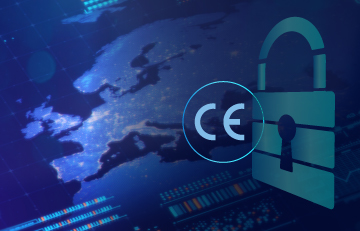
CE RED Delegated Act (EU 2022/30) Cybersecurity Compliance | EN 303 645 & EN 18031
The CE RED Delegated Act (EU 2022/30), aligned with EN 303 645 and EN 18031, introduces mandatory cybersecurity compliance requirements for all radio and IoT devices entering the European market.Effective August 1, 2025, manufacturers must ensure their products meet the cybersecurity standards required for CE marking under the Radio Equipment Directive (RED) 2014/53/EU. This regulation focuses on three key objectives: Protecting communication networks Safeguarding personal data and privacy Preventing fraud and misuse in connected devices Aligned with ETSI EN 303 645 and EN 18031, the CE RED Delegated Act (EU 2022/30) establishes a harmonized cybersecurity framework for connected products across the EU. At 360Compliance, we help manufacturers achieve full compliance through cybersecurity testing, technical documentation, and CE marking guidance — ensuring your devices are secure, compliant, and ready for market. 👉 Learn more about our Cybersecurity Testing Services and CE RED Delegated Act Compliance Solutions. What Is the CE RED Delegated Act (EU 2022/30) for Cybersecurity Compliance? The RED Delegated Act expands the Radio Equipment Directive (RED) by introducing new cybersecurity and data protection requirements for devices that transmit or receive data over networks. It enforces compliance with three main provisions: Article 3(3)(d) – Protection of networks and prevention of misuse Article 3(3)(e) – Safeguarding personal data and privacy Article 3(3)(f) – Fraud prevention for devices with payment or identity functions These obligations align with the EU Cyber Resilience Act (CRA) and GDPR, strengthening cybersecurity and consumer trust across digital products. Why CE RED Delegated Act Cybersecurity Compliance Matters Achieving compliance with the CE RED Delegated Act (EU 2022/30) is essential for manufacturers aiming to sell connected devices in the EU. Compliance ensures market access, builds consumer trust, and demonstrates a commitment to responsible product design. Key Benefits: Legal eligibility for CE marking under RED 2014/53/EU Stronger cybersecurity and resilience against threats Alignment with EN 303 645 and EN 18031 standards Compliance with GDPR and EU data protection requirements Enhanced customer confidence and reduced liability risk At 360Compliance, we simplify compliance through testing, documentation, and certification support based on the RED Delegated Act, EN 303 645, and EN 18031 requirements. Devices Covered by the CE RED Delegated Act Cybersecurity Requirements The CE RED Delegated Act applies to all radio and connected devices that use communication networks, including: Smartphones and connected mobile devices Smart home appliances and IoT systems Wearables and connected medical devices Routers, modems, and gateways Connected industrial and automotive technologies Preparing early helps manufacturers avoid costly redesigns and compliance delays ahead of enforcement in August 2025. Core Cybersecurity Requirements These cybersecurity controls form the foundation of CE RED Delegated Act compliance and align with EN 303 645 and EN 18031. Requirement Description Secure Communication Protect network integrity with encryption and authentication to prevent tampering. Personal Data Protection Apply GDPR-compliant safeguards for user data. Fraud Prevention Secure identity and financial functions against misuse. Network Integrity Ensure devices do not degrade or misuse network resources. Implementing EN 303 645 and EN 18031 during development ensures faster testing, certification, and EU market approval. How to Achieve CE RED Delegated Act Compliance Conduct Risk Assessment & Gap Analysis – Identify cybersecurity vulnerabilities early. Implement EN 303 645 & EN 18031 Standards – Apply best practices during design. Perform Cybersecurity Testing & Evaluation – Validate protection levels with 360Compliance. Prepare Documentation & Technical Files – Include risk assessments, test reports, and CE declarations. Obtain Certification & CE Marking – Complete the compliance evaluation for EU market access. 📘 Read the official text EUR-Lex – CE RED Delegated Act (EU 2022/30) Consequences of Non-Compliance Failure to comply with the CE RED Delegated Act can result in: EU market access restrictions or sales bans Regulatory fines or enforcement actions Reputational damage due to cybersecurity flaws Costly redesigns and product delays Early preparation ensures business continuity, regulatory compliance, and consumer trust before enforcement begins in 2025. FAQs About CE RED Delegated Act Compliance Is compliance mandatory?Yes — from August 1, 2025, compliance with the CE RED Delegated Act becomes mandatory for all radio and IoT devices. Which devices are affected?Any product that transmits or receives data over a network or uses radio connectivity. Which standards apply?ETSI EN 303 645, EN 18031, and the Cyber Resilience Act (CRA) support CE RED compliance. Where can I find the official regulation?Read it on EUR-Lex – EU 2022/30. Why Choose 360Compliance for CE RED Delegated Act & EN 303 645 Testing 360Compliance simplifies cybersecurity compliance for global manufacturers through end-to-end CE certification and testing services. Our Services Include: Project Management – From initial assessment to CE certification. Cybersecurity Testing – In line with EN 303 645, EN 18031, and RED Annex III. Documentation Support – Technical files, risk assessments, and CE declarations. Global Market Access – CE marking and international certification pathways. Also explore related services: Radio Equipment Directive (RED) Testing EMC Testing Safety Testing Cybersecurity Testing for IoT Devices Start Your CE RED Delegated Act Cybersecurity Journey 🔒 Contact 360Compliance today to start your CE RED Delegated Act, EN 303 645, and EN 18031 cybersecurity compliance journey.Our expert team ensures your products achieve CE and UKCA certification efficiently — making 360Compliance your trusted partner for EU cybersecurity and market access success. External Authoritative References CE RED Delegated Act (EU 2022/30) – EUR-Lex ETSI EN 303 645 – Cybersecurity for Consumer IoT EN 18031 – ICT Cybersecurity and Vulnerability Handling EU Cyber Resilience Act (Regulation (EU) 2024/2847)
Learn moreWhy Cybersecurity Testing Matters
As governments introduce new regulations to address emerging cyber threats, cybersecurity testing has become critical to ensure compliance and market access. Key regulations like the Cyber Resilience Act in the European Union aim to secure products by design throughout their entire lifecycle. Moreover, national frameworks such as the UK Product Security and Telecommunications Infrastructure (PSTI) Act ensure IoT devices meet specific security benchmarks to protect consumers.
Ensuring your products comply with cybersecurity standards like ETSI EN 303 645 is essential, especially for IoT devices entering European markets. Additionally, understanding the implications of directives such as the CE RED Delegated Act ensures your products meet all cybersecurity and radio-frequency safety requirements, keeping you ahead of regulatory challenges.
What Products Need Security Evaluations?
Cybersecurity testing is essential for a wide range of products, particularly those that connect to networks or store sensitive data. Some of the key product categories include:
- Internet of Things (IoT) devices: Smart home systems, wearables, industrial IoT sensors
- Mobile devices: Smartphones, tablets, and mobile terminals
- Software applications: Operating systems, cloud services, and mobile apps
- Telecommunications equipment: Gateways, routers, and connected communication hubs
- Consumer electronics: Smart TVs, connected appliances, and audio devices
Our Cybersecurity Testing Services
At 360Compliance, we understand the importance of cybersecurity and the complexity involved in meeting various regulations. Our cybersecurity testing services help you secure your products and ensure compliance with key regulations and frameworks. Here’s how we can assist:
1. Consultation and Gap Assessment
We analyze your product to identify potential security gaps and align it with relevant standards like ETSI EN 303 645 and UK PSTI requirements. Our expert consultants guide you through the necessary steps to strengthen your product’s cybersecurity.
2. Thorough Cybersecurity Testing
Using state-of-the-art testing methodologies, we perform security evaluations to identify potential vulnerabilities. We ensure that your product meets the standards set by regulations such as the Cyber Resilience Act and CE RED Delegated Act.
3. Regulatory Compliance Assistance
We help you navigate the complex landscape of cybersecurity regulations, ensuring your devices meet the necessary cybersecurity, radio-frequency, and operational safety requirements.
4. Custom Solutions for Market-Specific Needs
Whether your product targets the European, UK, or global market, we provide tailored solutions to meet regulatory demands. From ETSI EN 303 645 compliance to the CE RED Delegated Act, we ensure you’re ready for smooth market access.
The Benefits of Cybersecurity Testing with 360Compliance
- Expertise: Our specialists are well-versed in the latest cybersecurity regulations and testing methodologies.
- Efficiency: We streamline the certification process to save you time and resources while ensuring compliance.
- Market Access: Achieve certifications that open doors to global markets and reduce regulatory risks.
Ready to Secure Your Products?
Contact us today to ensure your products comply with the latest cybersecurity regulations and testing standards. Our experts will help you navigate the ever-changing regulatory landscape and secure your product’s future success.
Other Certifications
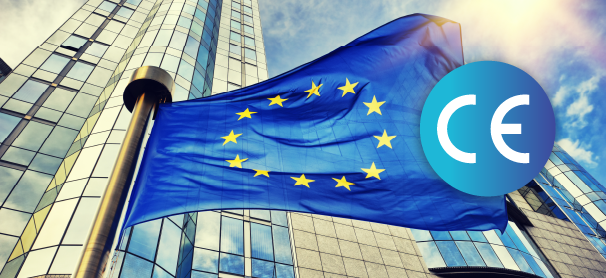
CE Certification
Why is CE Certification Important? CE certification confirms that the product entered the market legally, has all the permits, and does not pose any threat to human health or the safety and integrity of the environment. Thus, the CE mark signals both buyers and official regulators about the successful completion of all testing and certifying procedures. What Countries Require CE Marking? The mandatory CE certification applies to products entering the market of all 30 countries of the European Economic Area (EEA). It also covers Switzerland and Turkey, the United Kingdom, which have signed a number of bilateral agreements with the EU, including the CE marking requirement. Additionally, the UK indefinitely recognizes the EU's CE mark for various manufactured goods placed on the UK market. What Products Need a CE Certification? To determine whether a product requires CE Certification, manufacturers should consult the relevant EU directives and harmonized standards. Notified bodies, independent organizations authorized to assess product compliance with EU directives, can also provide guidance. Product Category Examples Electrical equipment Household appliances, power tools, lighting, cables Toys Dolls, action figures, toy cars, construction sets Machinery Industrial machinery, agricultural machinery, construction machinery Medical devices Surgical instruments, implants, diagnostic equipment Construction products Cement, steel, windows, doors Personal protective equipment Safety helmets, goggles, gloves, boots Pressure equipment Gas cylinders, boilers, pressure cookers Gas appliances Cookers, heaters, gas water heaters Aerosols Spray paint, deodorants, insecticides Telecommunications equipment Mobile phones, routers, modems Radio equipment Radios, televisions, Bluetooth devices Lifts Escalators, elevators, dumbwaiters Explosive devices Fireworks, detonators, ammunition What Products Do Not Require a CE Marking? Not all products imported into the listed countries require CE marking certification. In particular, goods belonging to the following categories, which are covered by other Directives, are subject to a different type of certification: Chemical products Cosmetics Food products Pharmaceuticals How to Obtain CE Certification? Obtaining a CE certificate involves a systematic process: Identify Applicable Directives The Directives include general safety requirements for products placed on the market. The specific parameters and technical requirements are detailed in the harmonized standards. If a product does not fall under any Directives requiring CE marking, it must still comply with a document outlining general safety requirements. Directive Number Product Category 2014/35/EU Low Voltage Directive (LVD) 2014/30/EU Electromagnetic Compatibility (EMC) 2011/65/EU Restriction of Hazardous Substances (RoHS) 2014/53/EU Radio Equipment 2014/34/EU Equipment and Protective Systems for Use in Explosive Atmospheres (ATEX) Regulation (EU) 2017/745 Medical Devices Regulation (EU) No 305/2011 Construction Products 2006/42/EC Machinery Regulation (EU) 2016/425 Personal Protective Equipment 2014/31/EU Non-automatic Weighing Instruments Regulation (EU) 2016/426 Appliances Burning Gaseous Fuels 2014/28/EU Explosives for Civil Uses 90/385/EEC Active Implantable Medical Devices 98/79/EC In Vitro Diagnostic Medical Devices 2014/90/EU Marine Equipment Directive 2013/53/EU Recreational Craft 2014/33/EU Lifts 2014/68/EU Pressure Equipment Regulation (EU) 2016/424 Cableway Installations to Carry Persons 2014/32/EU Measuring Instruments 2013/29/EU Pyrotechnic Articles Full list of CE directives you can find here Identify the requirements for the product Each Directive specifies essential requirements that a product must meet. To demonstrate conformity, manufacturers must identify applicable 'harmonized European Norms' (hENs), which are standards that offer a presumption of conformity to the essential requirements. These standards vary depending on the product's classification and intended use. Harmonized standards, available on the European Commission’s website, simplify compliance through clear frameworks. Determine if third-party assessment is needed Certain directives may require third-party assessment by a Notified Body (NB), an organization authorized by European authorities. For example, the Medical Devices directive and others mandate the use of an NB. However, the EU has reduced the number of products requiring NB assessment, placing more responsibility on manufacturers. Assess Product Conformity Conduct a thorough assessment of your product to ensure it conforms to the essential requirements outlined in the relevant directives. This step may involve testing and verification processes to demonstrate that your product meets the necessary safety and environmental standards. Compile a Technical File Create a comprehensive technical file that documents every aspect of your product's design, development, and manufacturing process. This technical file, also known as the Technical Construction File, should include technical descriptions, drawings, circuit diagrams, bills of materials, specifications, test reports, and other relevant information. The file serves as evidence of conformity and must be maintained for up to 10 years after the last unit is manufactured. Make a Declaration And Affix The CE Mark When satisfied that the product conforms to the applicable CE Marking Directives, the manufacturer must complete a Declaration of Conformity. It includes information about the product, directives, standards applied, and the responsible party in the company. Following this, affix the CE mark visibly on the product, signaling compliance with EU standards. This is the final stage, after which the product may be launched to the EU and EEA markets. Responsibility of Manufacturers for CE Certification To complete the standard procedure for obtaining the CE mark, manufacturers must find out which EU Directive regulates the access of products of their category to the market and check compliance with all regulations. After that, a conformity assessment is carried out, based on which a technical file is prepared. Further, the EU-authorized body examines the documents, and the manufacturer issues the EC Declaration of Conformity (DoC). When all documents are certified and the CE mark is received, the manufacturer can label with this mark their products and packaging. Responsibility of Distributors for Products with a CE Mark Distributors of goods in the EU market must ensure that the CE conformity mark has not yet expired and that the certificate itself is not fake. They also check the placement of the stamp on the product or its packaging since marking is the responsibility of the manufacturer. What Are the Benefits of CE Certification? There are several advantages to CE certification, including: Free movement of goods within the EEA Allows manufacturers to freely circulate their products within the EEA without facing additional technical barriers to trade. Increased market access CE certification can help manufacturers gain access to new markets in the EEA, as well as in other countries that recognize the EC marking. Enhanced product safety Helps to ensure that products meet high standards of safety and environmental protection. Improved consumer confidence CE certification indicates independent compliance with EU safety requirements, boosting consumer confidence. Become CE Certified with 360Compliance The CE marking procedure can be tedious and incomprehensible to non-professionals. However, the 360Compliance team will help you pass all stages of certification quickly, competently, and successfully. You will receive full project management with no hassle. You are also guaranteed technical support and a transparent pricing policy. To start the testing & certification process for obtaining a CE stamp, contact the 360Compliance team in any convenient way and get all the answers and instantly initiate the certification procedure. Frequently Asked Questions About CE Marking For How Long is a CE Certificate Valid? For each product group, a certain validity period is established, but in most cases, it is 3 years. After that, you need to go through the re-certification procedure. However, there are products for which the CE label is valid for 10 years or more. What are the Penalties for the Absence of a CE Compliance Certificate? Punishment for selling goods without the certificates in countries where the CE marking is mandatory varies widely from administrative to criminal liability. The specific article of the law that will be applied depends on the damage that a given product can cause to people or the environment. How to Get a CE Certificate? To obtain the CE stamp, it is necessary to go through a risk assessment procedure for the products offered. For this, you need to study the standards of the specific Directive that regulates access to the market for this type of products, make up a technical file, and pass testing. When all permits are issued, CE marking can be applied to the offered products. How to Authenticate a CE Certificate? You can authenticate a CE label using the official database. Also, it is possible to contact the official authority that issued the certificate and request details on this product. If it turns out that this product is not registered with official institutions, you are dealing with fake certification.
Learn more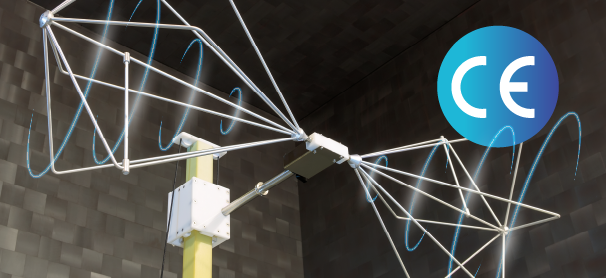
EMC Directive 2014/30/EU
Do you manufacture or sell electrical or electronic equipment in the European Union (EU)? If so, you'll need to ensure your products comply with the Electromagnetic Compatibility (EMC) Directive 2014/30/EU. Wondering how you can streamline the compliance process to ensure your products meet the EU's stringent electromagnetic compatibility requirements? 360 Compliance is here to guide you through every step, ensuring your products not only comply but thrive in the European market. What is CE EMC Certification? CE EMC Certification is a mark that indicates a product's compliance with Electromagnetic Compatibility (EMC) requirements in the European Union. EMC is crucial because electronic devices emit electromagnetic waves during operation, and without proper EMC measures, these emissions can lead to Electromagnetic Interference (EMI). The CE mark, which stands for Conformité Européenne, is a mandatory certification for products sold within the European Economic Area (EEA). It signifies that a product meets the essential EMC standards set by the European Union to ensure that it won't cause or be susceptible to electromagnetic interference. This interference could affect the proper functioning of other nearby electronic devices. The certification process is guided by Directive 2014/30/EU, which outlines the specific EMC requirements that products must meet to obtain the CE mark. This directive establishes the legal framework for electromagnetic compatibility and mandates that manufacturers thoroughly test their products for compliance. The goal is to guarantee that electronic devices can coexist harmoniously in the European market without causing disruption or compromise in functionality. Which Products Need the CE EMC Mark? If your product falls into the category of devices that can emit electromagnetic waves during operation, it likely requires the CE EMC mark. Here are some examples of products that typically need this certification: Electrical Appliances: Household appliances such as washing machines, refrigerators, and microwave. Information Technology Equipment: Computers, laptops, servers, and networking equipment. Consumer Electronics: This includes a broad range of devices like televisions, audio equipment, and gaming consoles. Medical Devices: Equipment used in the medical field, such as diagnostic machines and monitoring devices. Telecommunications Equipment: Phones, routers, and other communication devices. Industrial Machinery: Various types of machinery used in industrial settings, like manufacturing equipment and automation systems. Lighting Products: From simple light bulbs to complex lighting systems. Electronic Toys: Children's toys that incorporate electronic components or emit electromagnetic signals during play. Why is EMC Directive Important? Ensuring Market Access: Legal Compliance: CE EMC Certification is a legal requirement for placing products in the EU market. Non-compliance can result in serious consequences, including fines and withdrawal of products from the market. Enhanced Market Credibility: Products with CE EMC Certification signal adherence to high-quality standards, enhancing your brand's credibility and customer trust. Quality Assurance: Product Reliability: EMC Certification ensures that your products can function in the presence of electromagnetic disturbances, making them more reliable. Reduced Interference: Certification reduces the risk of your products causing interference with other electronic devices, preventing potential issues for end-users. How to Get CE EMC Certification? Step-by-Step Guidance: Consultation: Initiate the process with a consultation to understand your product and specific certification needs. Pre-assessment: Identify potential EMC issues and address them before formal testing to expedite the certification process. Testing and Evaluation: Utilize our accredited laboratories for comprehensive emissions and immunity testing. Documentation Support: Our team assists in preparing the necessary technical documentation required for certification. Declaration of Conformity: Once certified, we help you issue the Declaration of Conformity and affix the CE mark to your product. How long will testing take? The EMC CE certification procedure takes 4 to 6 weeks on average. If the product belongs to an industry that is regulated by other directives (e.g. CE RED), it is subject to additional tests, which increases the time required. Manufacturer's Responsibilities Related to EMC CE Certification The company that develops a product shall design it according to EMC CE norms and confirm compliance with the norms by independent laboratory tests. It is also required to: indicate the actual electromagnetic radiation level in the documentation; warn about the possible hazards associated with the use of the device; provide the user with operating instructions; indicate geographical restrictions on the use of the product, if any; keep a register of complaints; store certificates and declarations of conformity for at least 10 years; cooperate with local authorities and provide product samples to the authorities. Quick and Easy EMC CE Certification with 360Compliance Obtaining CE EMC Certification is not just a regulatory obligation; it is a strategic move to ensure your products' quality, compliance, and market competitiveness. By investing in certification, your business can access new markets, build trust with customers, and stay ahead in the dynamic world of electronics. At 360Compliance, we simplify the process, offering expert guidance and tailored solutions to ensure your products meet the highest standards of electromagnetic compatibility. Contact us to get transparent pricing, clear timelines, and technical support at all stages of the procedure.
Learn more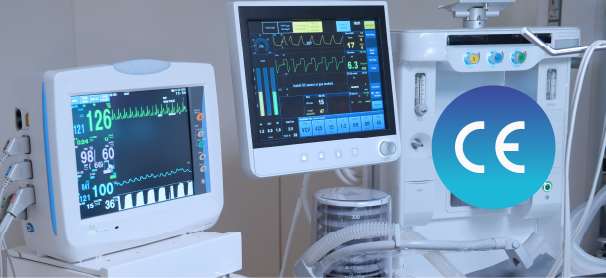
CE Mark Medical Device
Do you manufacture or plan to sell medical devices in the European Union (EU)? If so, obtaining CE marking for medical devices is essential for legal market access. This signifies compliance with the Medical Devices Regulation (MDR) 2017/745. Looking for a partner to demystify the CE marking process and ensure your medical devices comply with EU regulations? At 360Compliance, we're here to provide guidance and support to address any questions you may have. What is CE MD Certification? CE MD certification is a mandatory requirement for all medical devices that are sold in the European Union. The CE mark is a symbol that indicates that a product has met all of the applicable EU directives and regulations. To obtain CE marking for medical devices, manufacturers must adhere to the regulatory framework outlined in the Medical Devices Regulation (MDR) or the In Vitro Diagnostic Regulation (IVDR). The primary objective of CE approval for medical devices is to ensure the safety, effectiveness, and alignment with the needs of patients and healthcare professionals. The process is regulated by EU Directive 2017/745 and relevant industry regulations, including 90/385/EEC, 93/42/EEC, 98/79/EC, and 722/2012. Which Products Require MDR CE Marking? CE MD marking is mandatory for a wide range of medical devices, including but not limited to: Diagnostic Equipment; Implants; Surgical Instruments; Monitoring Devices; Dental Products; Rehabilitation Equipment. Manufacturers must ensure their products align with specific classifications and requirements outlined in the applicable directives. Which products do not need the CE mark medical device? CE medical device certification is unnecessary if the product does not meet the definition of a medical device outlined in EU Directive 2017/745 (MDR). In that case, other industry regulations, like those governing radio frequency or electromagnetic radiation, are applicable. Additionally, products can be sold without a CE certificate if alternative standards have been set for them, as seen with medicines, food products, cosmetics, and chemicals. CE Certification Process for Medical Devices The CE certification process for medical devices involves several key steps: Legal Requirement CE marking is mandatory for medical devices under the EU Medical Devices Regulation (MDR) or the In Vitro Diagnostic Medical Devices Regulation (IVDR), depending on the nature of the product. Conformity Assessment To obtain CE marking, manufacturers must undergo a conformity assessment, which involves demonstrating that the medical device complies with the relevant essential requirements and standards. Particularly the IEC 60601 series, which specifically addresses the safety and essential performance of medical electrical equipment. Classification of Devices Classifying devices involves categorizing medical devices into different classes based on their risk level. The classification determines the conformity assessment procedure that the manufacturer must follow. Technical Documentation Manufacturers must create and maintain technical documentation supporting the conformity of the medical device. This documentation should cover aspects such as design, manufacturing, risk assessment, and labeling. Notified Bodies In many cases, a Notified Body, an independent third-party organization, is involved in the conformity assessment process. The Notified Body assesses the technical documentation and issues a certificate if the requirements are met. Post-Market Surveillance CE marking is not a one-time event. Manufacturers must continue to monitor their products after they enter the market. Post-market surveillance involves tracking the device's performance, addressing any safety concerns, and updating documentation as needed. Unique Device Identification (UDI) The EU MDR and IVDR require the use of a Unique Device Identification system, allowing for traceability and improved post-market surveillance. The timeframe for issuing the certificate varies depending on the niche and the application of the device. The average time for a Class A device is 4 to 8 weeks. Clinical testing of Class B and C devices can take several months. Benefits of CE Certification for Medical Devices Market Access Achieving CE certification opens the doors to the vast European market, allowing manufacturers to distribute and sell their medical devices within the EU. Compliance with Regulations CE certification ensures that your medical device complies with the stringent regulations and standards set by the European authorities, fostering trust among healthcare professionals and end-users. Enhanced Reputation Displaying the CE mark on your medical devices demonstrates a commitment to quality and safety, enhancing your brand's reputation in the competitive healthcare industry. Risk Mitigation Compliance with CE mark medical device requirements helps mitigate legal and financial risks associated with non-compliance, ensuring that your products meet the highest safety and performance standards. Why Choose 360Compliance For CE Approval For Medical Devices? We provide a full range of CE certification services for medical devices. Our employees provide assistance with all the stages of this procedure from evaluating the legal environment and determining the class of equipment to the paperwork and cooperation with authorized bodies. We guarantee transparent prices, clear deadlines, and convenient technical support. Get your certificate quickly and with a minimum of effort by leaving an application on our website to learn more about our services!
Learn more

